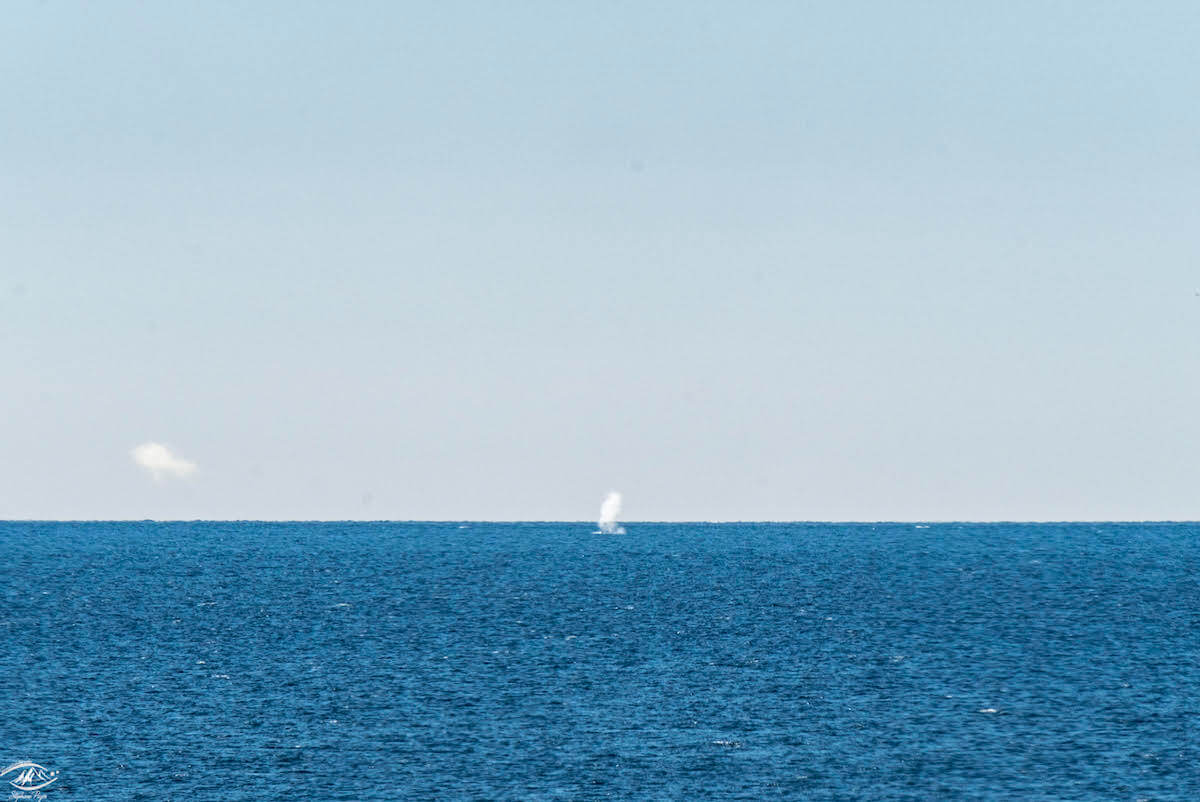Off the coast of Sept-Îles, a huge blast rises into the air, then another. Clearly visible from shore, these blows belong to two blue whales that approached the coast. Meanwhile, seals have been surprising observers all up and down the St. Lawrence, while a group of belugas has been regularly frequenting the mouth of the Saguenay, bringing with them an aura of spring.
On March 11, a first blue giant was visible from the mouth of the Saint-Marguerite River in Sept-Îles. “We could see its spout and its back through our binoculars,” says one observer. The next day, two individuals were present in the area. These titans produce impressive blasts that can reach up to 6 metres high. Their breathing sequences generally consist of 3 or 4 exhalations. Their dives last between 10 and 15 minutes, and in some cases up to 30 minutes.
Surprising seals
“Five harp seals were present last week in Sept-Îles,” reports Jacques Gélineau, navigator and marine mammal observer. “They were scattered on the few remaining blocks of ice that could support their weight,” he adds. Indeed, the absence of cold weather in recent weeks has reduced the already scarce ice cover in the area. The same phenomenon is also being observed around the Magdalen Islands, and represents a major challenge for seals and their pups. On the other side of the river, off the coast of Penouille in Gaspé Bay, 70 seals have been seen resting on the ice in recent days.
In Tadoussac, a comical event surprised everyone who had their eyes on the Saguenay Fjord in the early afternoon of March 16. A harp seal was drifting on a large chunk of ice! Peacefully nestled on its little platform, it was hardly disturbed by the astonished observers keenly watching it from shore.
On March 11, a harbour seal was present near the tip of Pointe de l’Islet. That same day, during a stroll along the water’s edge, a naturalist enjoyed a wonderful encounter with a pinniped: “I was at Pointe-Rouge late in the day on Saturday, sitting on the rocks near the water, when a harbour seal suddenly popped out its head literally within 5 metres of me. It stayed there a good while, staring at me in the eyes while swimming… It was quite special! Not long after that it ended up taking a dive.”
Return of the belugas
A group of two or three belugas has been regularly plying the waters of Tadoussac Bay and the entrance to the Saguenay Fjord. For one resident, it’s a sign that spring has sprung: “Warm weather is right around the corner and so are the belugas!” Many folks have observed them from the ferry or from Pointe-Noire in Baie-Saint-Catherine. Even if only a handful of belugas have been observed in recent weeks, the continued presence of this small group is undoubtedly a sign that belugas are slowly beginning to migrate back to the area as the weather grows milder. Whale-watching season is fast approaching!
Share your observations!
Have you seen any marine mammals in the St. Lawrence? Whether it’s a spout offshore or just a couple of seals, drop us a line and send your photos to [email protected]!






